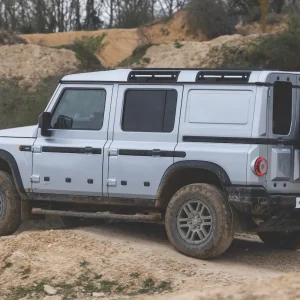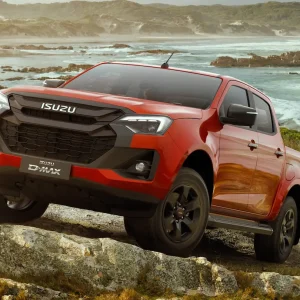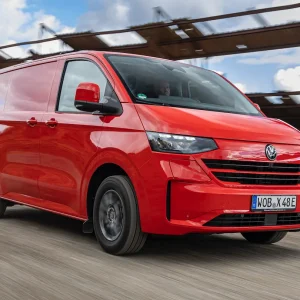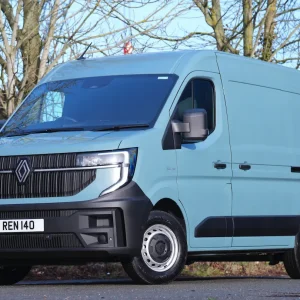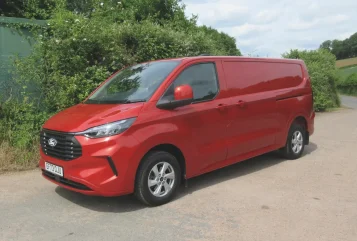
Winner of the What Van? 2024 Van of the Year award, Ford’s Transit Custom has been quite an astonishing success story. The story looks set to continue with its latest incarnation, with all tastes catered for.
You can have your Custom in diesel, hybrid or battery-electric guise and in a wide selection of different specifications, including Leader, Trend, Limited, Sport, Trail and MS-RT.
The Custom is marketed as a van, a double-cab-in-van, a Kombi and as the well-specified passenger-carrying Tourneo. An especially-interesting and unusual derivative is the Multicab, with an L-shaped bulkhead which allows longer items to be transported while retaining two second-row passenger seats.
Diesel models are propelled by the 2.0-litre EcoBlue engine with outputs of 110hp, 136hp, 150hp or 170hp with the choice of a six-speed manual or an eight-speed automatic transmission. They are all front-wheel-drive, with automatic models up for grabs with four-wheel-drive – the electric Transit Custom is rear-wheel-drive.
We got to grips with the 150hp L2H1 diesel in Limited trim with a manual box.
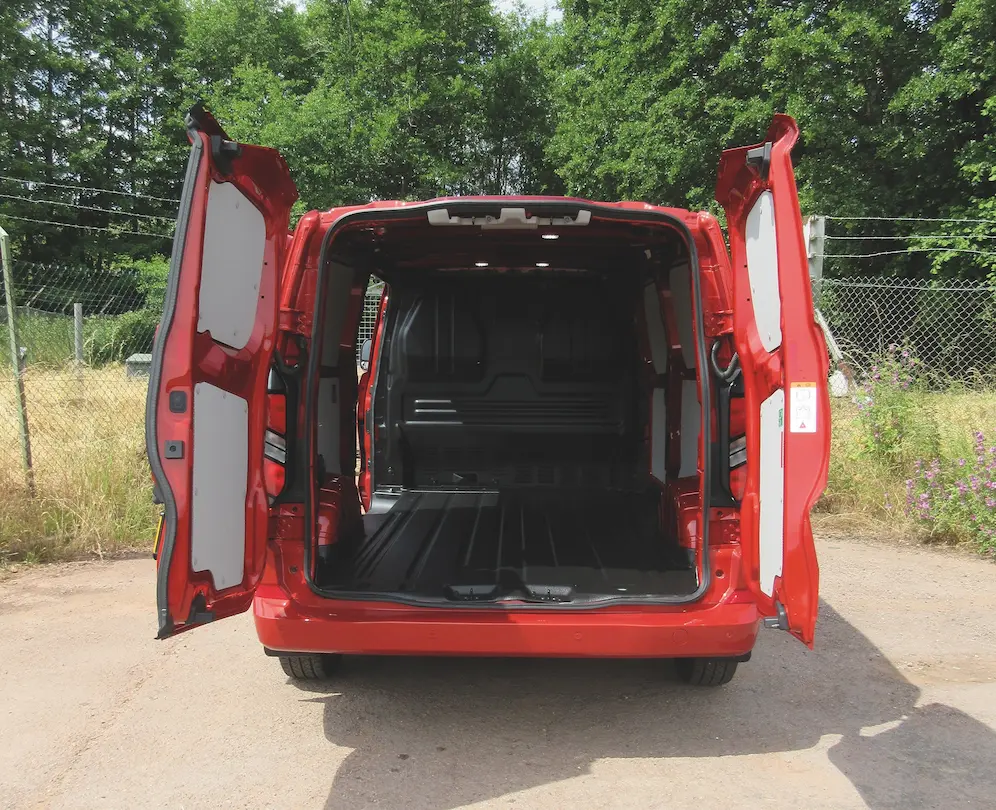
Load bay
Access to the 6.8m3 cargo bay is by means of a sliding pavement-side door plus twin rear doors which can be swung through 90 degrees, or through 180 degrees if you push them firmly.
The nearside door of the pair is unlatched electrically – all you need to do is press a button. Press a button on the offside door pillar and twin LED spotlights illuminate to make it easier to load and unload late at night. Like the LED headlights, they should last for ages.
The cargo bed is protected against minor damage by a fitted mat. Panels provide the doors and sides with some protection against bumps and bangs, but the wheel boxes are left defenceless.
Eight load tie-down rings are provided, included one positioned above each of the wheel boxes.
A full-height bulkhead divides the cab from the cargo area and features a hatch at its base which folds upwards and is secured by a magnetic catch. Extending the load floor from 3,002mm to 3,450mm, it allows extra-long items to be slid into the space under the passenger seats.
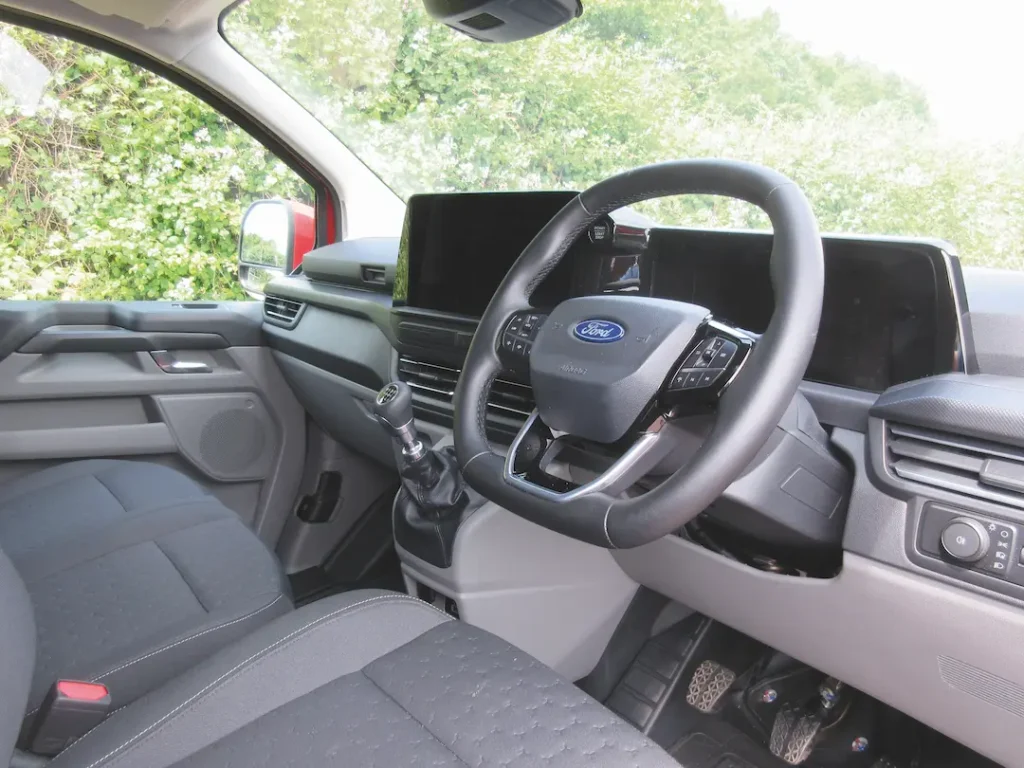
Interior and equipment
The Custom Limited’s three-seater cab features keyless entry and ignition with a push-button start and an electric parking brake. The 13in touchscreen dominating the dashboard is a model of clarity and easy to use.
The dual-zone automatic air con is an extra-cost option, as is the heated, squared-off, Sensico steering wheel. Although the wheel was fixed in our case, it is also available in tiltable guise which allows it to be used as a stand for laptops and tablets.
It can even support a table so you can eat your lunch in a civilised fashion.
The air con and steering wheel heater are controlled by buttons positioned beneath the touchscreen. Adjacent buttons control heaters for the seats, the windscreen and the exterior mirrors, as well as the heating and ventilation system’s booster fan.
Unfortunately all these buttons are poorly illuminated, so it is not always easy to see whether these devices are switched on or off.
The onboard SYNC 4 infotainment package includes Android Auto and Apple CarPlay.
The driver’s seat and the steering wheel are height-adjustable – the seat gets a lumbar support plus adjustable armrests – and the wheel plays host to remote controls for the DAB radio and the cruise control buttons. A traditional knob on the fascia allows you to turn the radio up, down and off.
Storage facilities include a lockable glove-box, a shallow but deep lidded compartment on top of the dashboard adjacent to a roomy shelf, and three bins and shelves of differing sizes in each of the doors. The largest of the bins incorporates a moulding which can grasp a flask or a large bottle of water.
You will find a cup-holder at each of the dashboard’s extremities plus a fold-down cup-holder next to the gear stick. Nearby is a 12v power point along with USB sockets and a deep cubby-hole.
The Complete Dual Passenger Seat option (which ought to be standard) enables you to flip down the back of the middle seat. That turns it into a handy desk complete with an elasticated band to keep paperwork together.
Folding both the passenger seat cushions forwards reveals a hidden compartment which may of course be partially occupied by any overlength items which have been slid through the hatch in the bulkhead.
Travelling on the centre passenger seat on anything other than a short journey is unlikely to be a comfortable experience given the lack of room for the occupant’s right knee.
Electric windows are fitted, and the electrically-adjustable exterior rear view mirrors fold inwards automatically. They come with a separate, lower, wide-angle section.
The rear view camera offers an impressively clear image, the viewing angle can be altered, and you can zoom in on whatever is behind you. It can deliver a birds-eye view of any hazards around the vehicle. Front and rear sensors aid parking.
The comprehensive suite of onboard safety devices includes ABS; Electronic Stability Control; Roll Stability Control; Traction Control System; Hill Launch Assist; Tyre Pressure Monitoring System; Collision Mitigation System; Intelligent Speed Limiter and Lane Keeping Aid. Trailer Sway should ensure that you don’t come to grief if any trailer you are hauling decides to develop a mind of its own.
Speed Sign Recognition tells you the speed limit on the road you are travelling down and warns you if it is being exceeded. While that is laudable, some of the other safety systems of the Custom we were driving seemed to be a little adrift of reality.
We were constantly being told to put our hands on the steering wheel even when we had a firm grip of it, and to take a break even when we’d only been driving for five minutes and were straining every sinew to show how alert we were. This entire aspect of the vehicle needs a reset and a rethink.
If everything goes pear-shaped despite all the safety provisions then there is no shortage of airbags. The passenger airbag is roof-mounted to free up storage space in the dashboard.
Disc brakes are deployed on all four wheels and rack-and-pinion electric power steering delivers a 12.1m kerb-to-kerb turning circle.
The suspension is all-independent, with MacPherson struts and variable-rate coil springs plus an anti-roll bar at the front, and independent semi-trailing arms at the back. Gas-filled shock absorbers are fitted all around.
Our Transit Custom sat on 16in alloy wheels shod with 215/65 R16C Goodyear Vector 4Seasons Cargo tyres.
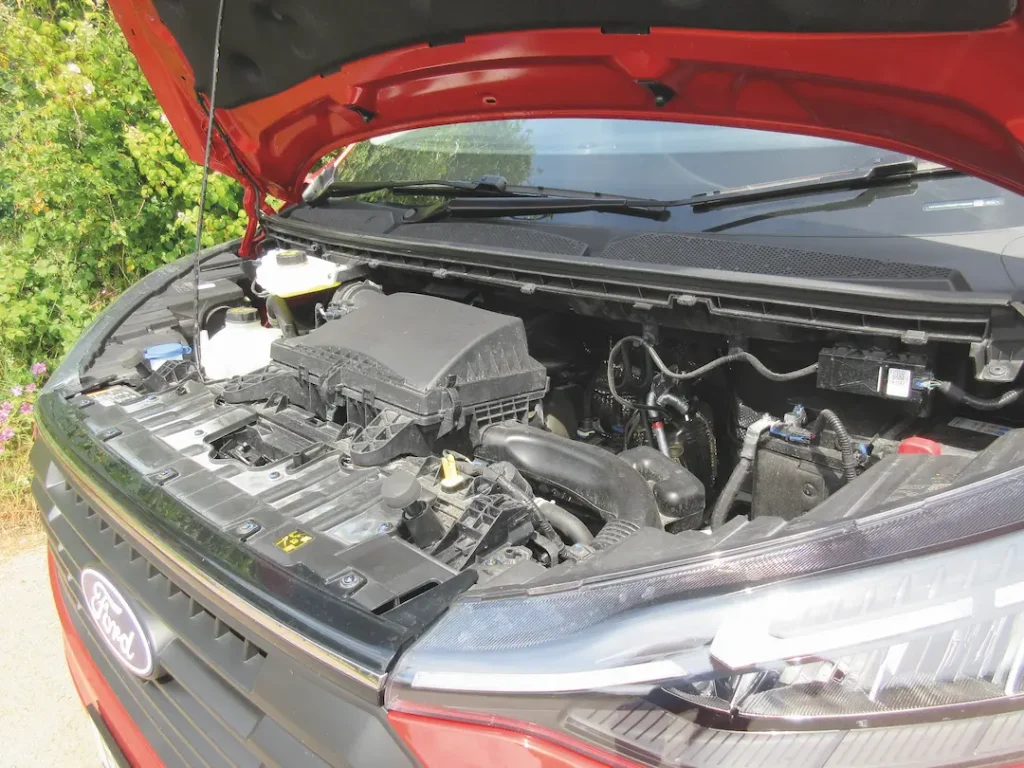
Powertrain
Fitted with a variable-geometry turbocharger with electric actuation, the Transit Custom’s four-cylinder 16-valve in-line common rail engine delivers its maximum power output at 3,500rpm. Top torque of 360Nm kicks in across a 1,500-to-2,500rpm plateau.
AdBlue is required to ensure compliance with Euro 6 exhaust emission requirements and is held in a 22-litre reservoir.
Driving
Custom boasts the usual slick, quick, effortless manual gear change that we have come to expect in all Ford light commercials. Manoeuvrability at low speeds is exemplary, and the handling out on the open road matches and in many cases outclasses what is on offer from the opposition.
The steering could perhaps stand to be a touch tighter and more responsive but that is probably no more than a matter of personal taste.
The ride is competent rather than outstanding and in-cab noise levels could stand to be better suppressed. The noise from the exhaust is particularly intrusive.
Different drive modes are available in a package that includes Normal, Eco, Sport and Slippery. You make your choice using a button on the dashboard.
Eco gives you better fuel economy in exchange for a modest reduction in performance, Sport gives you extra performance in exchange for increased fuel usage, while Slippery should enable you to cope a bit better with snow and ice.
Normal is fine in most conditions, delivering a healthy dollop of acceleration through the gears and enabling the Custom to cruise down motorways and dual carriageways without having to breathe too hard.
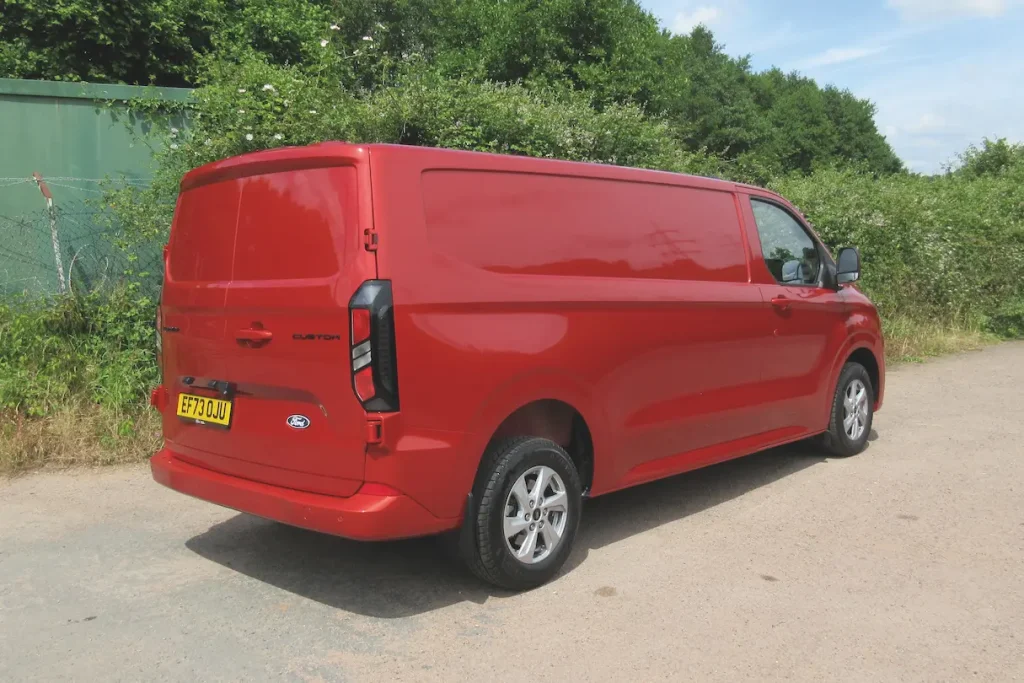
Operating
Service intervals are set at two years/25,000 miles and the Transit Custom is covered by a three-year/100,000-mile warranty. We averaged 35.5mpg according to the onboard computer, which pretty much matched our real-world experience.
The combined WLTP (Worldwide Harmonised Light Vehicles Test Procedure) figure is 38.7mpg.
A steel 16in spare wheel is provided with the jack mounted on the nearside rear door pillar. Shame there are no side rubbing strips to help protect the extra-cost metallic paintwork from scratches and scrapes.
Remember that all new Customs come with the Ford Pro platform of software and connected services, enabling management tools from Ford Pro Telematics that embrace the Ford Pass Pro app for small businesses and FORDLiive for larger fleets.
| Model | Ford Transit Custom Limited 2.0-litre EcoBlue 6spd manual 150hp diesel 320 L2H1 |
| Price (ex VAT) | £38,000 |
| Price range (ex VAT) | £32,350-£62,490 |
| Gross payload | 1,258kg |
| Load length | 3,002mm |
| Load width (min/max) | 1,392mm/1,777mm |
| Load bay height | 1,427mm |
| Load volume | 6.8m3 |
| Loading height | 593mm |
| Rear door aperture | 1,314mm x 1,400mm |
| Side door aperture | 1,301mm x 1,030mm |
| Gross vehicle weight | 3,225kg |
| Braked trailer towing weight | 2,500kg |
| Engine size/power | 1,996cc/150hp @ 3,500rpm |
| Torque | 360Nm @ 1,500-2,500rpm |
| Gearbox | 6sp |
| Fuel economy (combined WLTP) | 38.7mpg |
| Fuel tank | 55 litres |
| CO2 | 191g/km |
| Warranty | 3yrs/100,000 miles |
| Service intervals | 2yrs/25,000miles |
| Insurance group | TBA |
| Price as tested | £39,445 |
Rivals
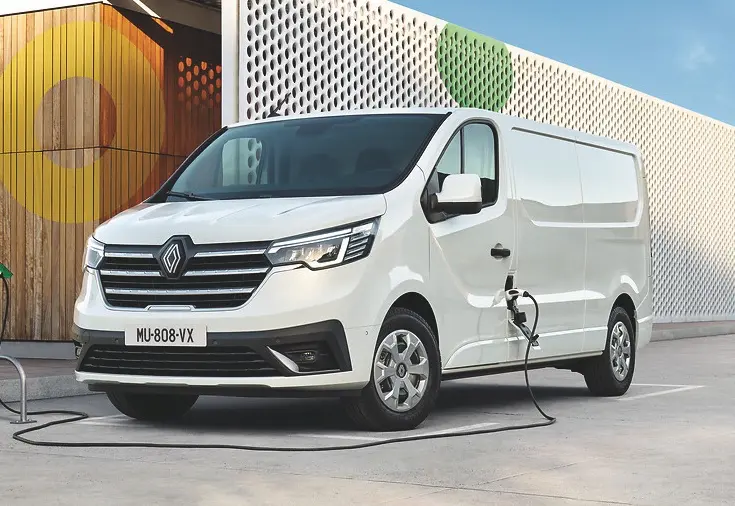
Renault Trafic
Facelifted in 2022 with a lot more safety kit added, the Trafic is a pleasant-to-drive, versatile load shifter with some intelligent features. Renault is now spotlighting the zero-emission E-Tech model.
| Price range (ex VAT) | £29,000-£41,250 |
| Load volume | 4.0-8.9m3 |
| Gross payload | 881-1,222kg |
| Engines | 130hp, 150hp, 170hp diesel, 90kW electric |
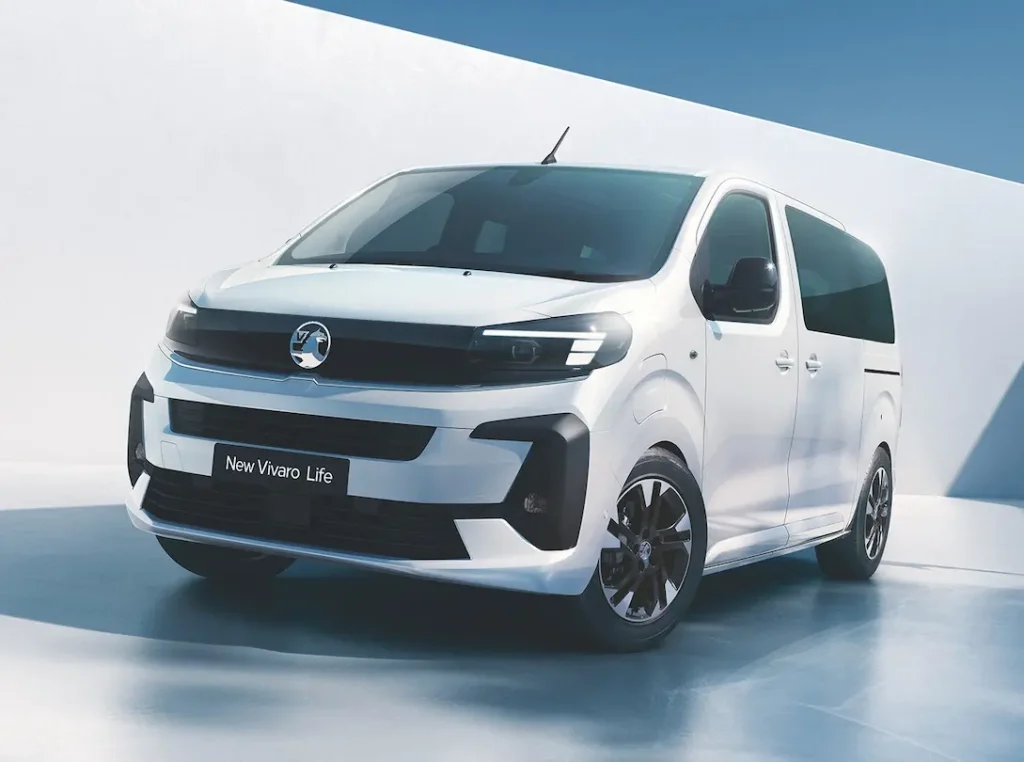
Vauxhall Vivaro
Vauxhall is part of the mighty Stellantis group, which means that the Vivaro is sold by Citroen as the Dispatch, Peugeot as the Expert and Fiat Professional as the Scudo. A joint venture with Toyota means that the same model is also marketed as the Proace. No matter which model you choose, they’re all worth a look.
| Price range (ex VAT) | £27,855-£47,630 |
| Load volume | 3.2-6.1m3 |
| Gross payload | 915-1,384kg |
| Engines | 120hp, 145hp diesel, 101kW electric |
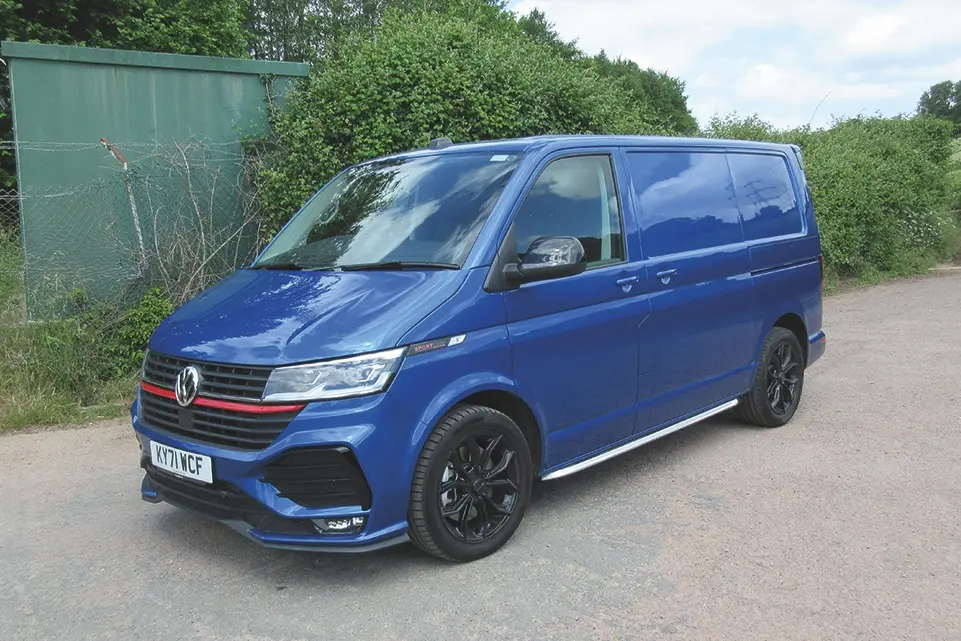
Volkswagen Transporter
The absence of a zero-emission version leaves a big hole in the current Transporter line-up but that is about to be rectified. The IAA Transportation show in Hanover, Germany, witnessed the launch of an all-new model with the choice of three different powertrains: electric, plug-in hybrid and turbodiesel.
| Price range (ex VAT) | £28,020-£48,500 |
| Load volume | 5.8-6.7m3 |
| Gross payload | 688-1,279kg |
| Engines | 90hp, 110hp, 150hp, 204hp diesel |
The Final Verdict
| Design | 9/10 | Plenty of clever ideas, including putting the passenger airbag in the roof to create more dashboard stowage space. |
| Cabin | 8/10 | Comfortable working environment with plenty of useful features, although space for the middle passenger is restricted. |
| Ride | 7/10 | Competent rather than outstanding, with even moderately-uneven surfaces creating challenges. |
| Refinement | 7/10 | No squeaks or creaks, but in-cab noise levels need to be suppressed more effectively. |
| Load area | 8/10 | Does what it says on the tin, and we particularly like the load-through hatch and the LED spotlights. |
| Handling/performance | 8/10 | Both meet and in some cases exceed industry standards, with Normal driving mode delivering sufficient punch for most activities. |
| Engine/transmission | 10/10 | Well-matched, with Ford’s extraordinarily-slick manual gearbox a winner once again. |
| Standard equipment | 8/10 | Lots of useful kit and we like the 13in touch-screen.. |
| Operating costs | 8/10 | Decent warranty and service intervals coupled with rock-solid residuals are all good plus-points. |
| What Van? subjective rating | 8/10 | Yet another sensible all-rounder from Ford. |
| Overall rating | 8/10 |

